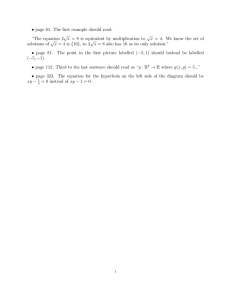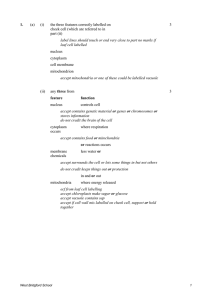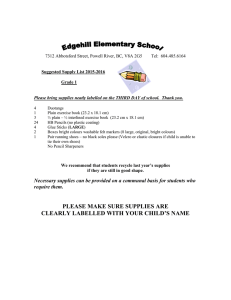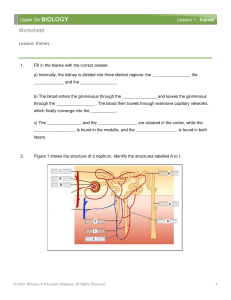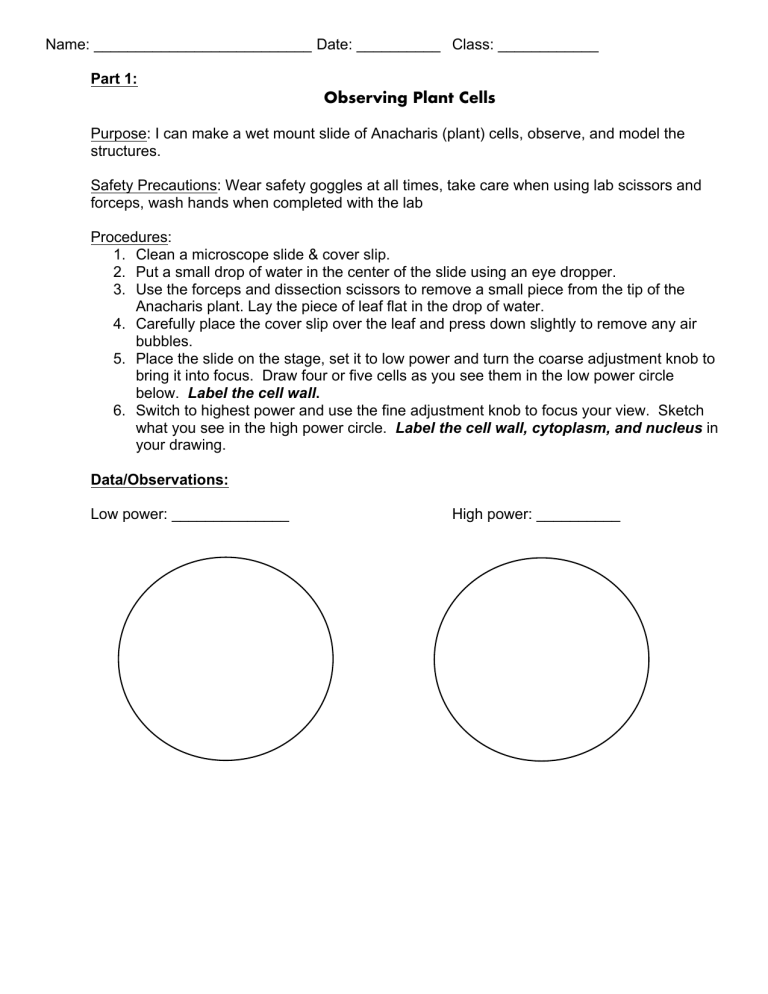
Name: __________________________ Date: __________ Class: ____________ Part 1: Observing Plant Cells Purpose: I can make a wet mount slide of Anacharis (plant) cells, observe, and model the structures. Safety Precautions: Wear safety goggles at all times, take care when using lab scissors and forceps, wash hands when completed with the lab Procedures: 1. Clean a microscope slide & cover slip. 2. Put a small drop of water in the center of the slide using an eye dropper. 3. Use the forceps and dissection scissors to remove a small piece from the tip of the Anacharis plant. Lay the piece of leaf flat in the drop of water. 4. Carefully place the cover slip over the leaf and press down slightly to remove any air bubbles. 5. Place the slide on the stage, set it to low power and turn the coarse adjustment knob to bring it into focus. Draw four or five cells as you see them in the low power circle below. Label the cell wall. 6. Switch to highest power and use the fine adjustment knob to focus your view. Sketch what you see in the high power circle. Label the cell wall, cytoplasm, and nucleus in your drawing. Data/Observations: Low power: ______________ High power: __________ Part 2: Observing Animal Cells Purpose: I can observe a prepared slide of human cheek cells. Safety Precautions: Wear safety goggles at all times, wash hands when completed with the lab Procedures: 1. Obtain a prepared human cheek cell slide. 2. Place the slide on the stage, set it to low power and turn the coarse adjustment knob to bring it into focus. Draw four or five cells as you see them in the low power circle below. Label the cell membrane. 3. Switch to highest power and use the fine adjustment knob to focus your view. Sketch what you see in the high power circle. Label the cell membrane, cytoplasm, and nucleus in your drawing. Data/Observations: Low power: ______________ High power: __________ Conclusions: 1. What is the general shape of the Anacharis (plant) cell? _______________________ What is the general shape of the cheek (animal) cell? ___________________________ 2. What cell parts did you observe in both the plant & animal cells?_________________ ______________________________________________________________________ 3. How did the outer boundaries around the plant and animal cells look different under the microscope? ______________________________________________________________ _____________________________________________________________________________ 4. Why do you think the plant cells are shaped in this way? What function would it serve the organism for the structure of the plant cell to be what you observed? ______________________________________________________________________ ______________________________________________________________________ ______________________________________________________________________ ______________________________________________________________________ 5. What other observations can you make about the differences between the low and high power perspective? ______________________________________________________________________ ______________________________________________________________________ ______________________________________________________________________ ______________________________________________________________________ Observing Plant & Cheek Cells Scoring Guide: 4 Exemplary 3 Accomplished 2 Developing 1 Beginning Plant Cell: Low power Power correctly labelled; neat, colorful, detailed sketches; cell wall correctly identified/labelled Power correctly labelled; neat, colorful, sketches; cell wall labelled Power labelled; sketches lack detail, color or neatness; cell wall identified incorrectly or not labelled Power not labelled or incorrectly labelled; sketches lack detail, color or neatness; cell wall identified incorrectly or not labelled Plant Cell: High Power Power labelled; neat, colorful, detailed sketches; cell wall, cytoplasm, nucleus correctly identified/labelled Power correctly labelled; neat, colorful, sketches; cell wall, cytoplasm, nucleus labelled Power labelled; sketches lack detail, color or neatness; cell wall, cytoplasm, nucleus identified incorrectly or not labelled Power not labelled or incorrectly labelled; sketches lack detail, color or neatness; cell wall, cytoplasm, nucleus identified incorrectly or not labelled Cheek Cell: Low Power Power labelled; neat, colorful, detailed sketches; cell membrane correctly identified/labelled Power correctly labelled; neat, colorful, sketches; cell membrane labelled Power labelled; sketches lack detail, color or neatness; cell membrane identified incorrectly or not labelled Power not labelled or incorrectly labelled; sketches lack detail, color or neatness; cell membrane identified incorrectly or not labelled Cheek Cell: High Power Power labelled; neat, colorful, detailed sketches; cell membrane, cytoplasm, nucleus correctly identified/labelled Power correctly labelled; neat, colorful, sketches; cell membrane, cytoplasm, nucleus labelled Power labelled; sketches lack detail, color or neatness; cell membrane, cytoplasm, nucleus identified incorrectly or not labelled Power not labelled or incorrectly labelled; sketches lack detail, color or neatness; cell membrane, cytoplasm, nucleus identified incorrectly or not labelled Conclusion Questions Answer Key: 1. The plant cell shape should be more angular and regular in shape (rectangular or box-like). The cheek cell shape should be rounder, more organic, less box-like. 2. Students should be able to observe a nucleus in both the plant and animal cells. 3. Students may observe that the outer boundary of the plant cell looks more rigid and stiff. The outer boundary of the cheek cell appears more jagged and less rigid. 4. Student might hypothesize that the plant cells are shaped in such a way to provide structure for the plant and give it shape. Lacking skeletons, the plant cells contain cell walls to provide structure and support for the plant. 5. Students might make observations about movement within the cells at higher power. They may point out other structures (observed as dots or circles) that they can see within the plant cells especially. They might describe how the cheek cells tend to appear stacked or overlap, and aren’t as neat and orderly as the plant cells.
